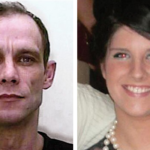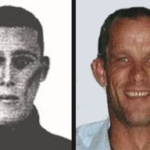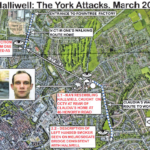Helen Sage: NYE Vindicated Again
Regular contributors TIM HICKS and CHRIS CLARK have for some time been writing a series of articles about serial killer Christopher Halliwell entitled “Christopher Halliwell the Secret Murders” in which they examined murders that may have been committed by serial killer Christopher Halliwell. One of these was the disappearance of Miss Helen Sage, which they argue was certainly a murder for which Halliwell should be considered as a suspect, but which Greater Manchester Police (GMP) refused to record as a crime.
They write now with the latest astonishing developments on this case, which have vindicated their concerns about the failures in GMP they highlighted.
5.17. Manchester 3
by TIM HICKS and CHRIS CLARK
~~~~~
Introduction: The Murder of Helen Sage
Briefly, Helen Sage was a devoted single mother who supplemented her income with prostitution and disappeared in Manchester in August 1997. She went out to work the streets one night, leaving her daughter with a neighbour, never returned and has never been seen or heard from since.
She was at one time suspected of being the unidentified “Angel Meadow Murder” victim, but was eliminated from this inquiry, which remains unsolved.
There are similarities with the murder of another prostitute, Julie Jones. Her naked body was found under bushes at Shudehill, Manchester, six days after she was reported missing on the 3rd of July 1998, only one year after Helen’s disappearance. However, GMP has not formally linked the cases.
The Detective Sergeant Carr Criteria
There has been no trace of Helen Sage and no proof of life has been discovered since her disappearance twenty-two years ago.
The authors therefore believe she has been murdered and her body concealed.
In police parlance, this is called a “no body murder”.
However, GMP has classified Helen Sage’s disappearance as a “missing person” and is refusing to treat it as a crime.
Detective Sergeant Clare Carr, from GMP’s Cold Case Unit, said:
“At the time of Helen’s disappearance a number of hypotheses were explored to establish what happened to her.
As with cases of this nature, this is normal procedure to make sure that every outcome is considered to try and find that person.
Helen’s disappearance is not currently being treated as murder as there has never been any physical evidence to suggest she was killed.
Of course, if any new information came to light we would review this.”
The criteria GMP uses to assess if a missing person is actually a “no body murder” is that there must be physical evidence to show that a crime has been committed, so circumstantial evidence is ignored.
Why the authors believe GMP should reclassify Helen Sage’s disappearance as a murder.
The authors believe GMP should review Helen Sage’s disappearance and re-classify it as a murder because:
- There was no known reason for Helen to disappear.
- Helen has been missing for twenty two years and no trace has ever been found of her.
- Helen had no other way of earning money other than being a prostitute, yet has not come to the attention of the police since her disappearance.
- Helen was a devoted mother and abandoned her child. This is normally accepted as the key indicator of a no body murder of a woman.
- Helen was a prostitute, an occupation that makes the victim more vulnerable and under greater threat of violence.
- The National Crime Agency (NCA) has confirmed there is no proof of life.
- This is consistent with the College of Policing recommended best practice, which Detective Sergeant Carr and GMP have chosen to ignore.
Why the authors believe Christopher Halliwell should be considered as a suspect in the murder of Helen Sage
The authors believe Christopher Halliwell should be considered as a suspect in the murder of Helen Sage for the following reasons:
- Halliwell had lived in the Liverpool area for some time and travelled widely. Manchester is about an hour’s drive from Liverpool.
- Halliwell regularly used prostitutes and visited red light districts. He may have been familiar with Helen Sage’s abduction point from picking up prostitutes in Manchester while visiting the City. He may even have been a client of hers.
- Halliwell was a narrow boating enthusiast. The Leeds and Liverpool Canal connects to the Bridgewater Canal and then to the Rochdale Canal, which goes into Manchester City Centre and the abduction point for Helen Sage. He may have visited Manchester on a narrow boating holiday and used the services of prostitutes there.
- Halliwell’s victim preferences included prostitutes.
- Halliwell murdered prostitute Becky Godden Edwards and concealed her body by burying it. So his modus operandi of killing a prostitute and concealing her body is consistent with the disappearance of Helen Sage.
- No other suspect has emerged since Halliwell’s arrest in 2011 who murdered prostitutes, concealed their bodies and had access to Manchester.
Whilst this is a circumstantial case, it is still sufficient to warrant declaring the disappearance of Helen Sage as a “no body murder” and interviewing Halliwell as a suspect.
Greater Manchester Police stone-walling to prevent the investigation of the death of a prostitute
Tim wrote to Greater Manchester Police raising the author’s concern that Helen Sage had been murdered and suggesting that Christopher Halliwell should be considered as a suspect.
Despite the fact that the NYE had provided a new line of enquiry, the GMP response was to refuse to re-consider its position or review the case. It insisted that Helen Sage was missing – not murdered – on the basis that GMP Policy was to declare a “no body murder” only if there was physical evidence of a crime. When Tim challenged this, the GMP Press Office responded:
“We will not be drawn further on this matter.”
Having been stone-walled by GMP, Tim approached Baroness Beverley Hughes. Greater Manchester’s Deputy Mayor for Policing, Crime, Criminal Justice & Fire who is responsible to Andy Burnham, the Mayor of Greater Manchester, for holding the Chief Constable to account for the efficiency of GMP. Tim raised concerns with Baroness Hughes that:
- It appeared that the murder of a woman in Manchester had been misclassified as a missing person’s case and a crime had not been recorded, when it should have been.
- GMP force policy was inadequate and non-compliant with the College of Policing recommended best practice that all other forces in the UK

Baroness Beverley Hughes
Greater Manchester’s Deputy Mayor for Policing, Crime, Criminal Justice & Fire
Acquiescing to crimes not being recorded by GMP
Baroness Hughes responded by refusing to take up Helen’s case because she asserted -wrongly – that it was an operational matter for the Chief Constable.
This clearly is preposterous. The matter relates to force policy, efficiency, and the accuracy of the crime figures, which are not operational matters and are within her remit. In short, she simply rubber-stamped the Chief Constable’s decision and failed to hold him to account, thereby allowing another crime not to be recorded by GMP.
In this documentary on the Midlands Ripper Aun Kyte, Chief Constable Mick Creedon of Derbyshire Police – who, as a Detective Superintendent, led the successful cold case investigation into Kyte – laments, attitudes to prostitute murders in the media, police and the public, which was unsympathetic, because of a perception that prostitution was a lifestyle choice and violence was an inevitable consequence of it.
The authors have no doubt that if Helen had been the daughter of a policeman or a Labour Councillor, GMP and Deputy Mayor would have been all over this case. Instead it has just been ignored because Helen Sage was a single mum that was going through hard times and paid for the upkeep of her child through prostitution.
The most basic civil right we all have is not to be murdered. When murder occurs, the organisation responsible for securing justice for the victim and her family is the police. This is a sacred duty on our police service and it should not depend on circumstances, which force area you live in and the personal opinions of Police Officers and politicians on the morality of the victim’s occupation.
It therefore saddens me very deeply that this social prejudice against prostitutes, and a feeling that being murdered or beaten up is an occupational hazard of their occupation and does not need to be investigated, still prevails in GMP.
HM Inspectorate of Constabulary, Fire & Rescue Services (HMICFRS) vindicates the NYE’s concerns
In their article Manchester 2: The murder of Helen Sage Re-assessed, the authors alleged that GMP’s perverse refusal to follow College of Policing guidance on missing persons investigations and adherence to the Detective Sergeant Carr Criteria ensured that:
“The GMP crime figures for serious crime have been under recorded”.
The authors were not surprised, therefore, to read that an inspection by HMICFRS had come to exactly the same conclusion – thereby confirming that the criticism made by the authors in the above article is entirely accurate.
The inspection concluded that GMP was failing to record 80,000 crimes a year. BBC report here. HMICFRS report here.
Specifically, GMP:
- failed to record more than one in every five crimes reported by the public and more than one in every four violent crimes.
- did not record an estimated 80,100 crimes reported to it between 1 July 2019 and 30 June 2020. This amounts to approximately 220 crimes a day where victims may be denied the opportunity to get the justice they deserve.
- failed to record a high proportion of violent crime including domestic abuse and behavioural crimes, such as harassment, stalking and coercive controlling behaviour.
- failed to make sure all investigations were conducted effectively, with investigation plans not completed to an acceptable standard and no appropriate levels of review and supervision applied.
HMICFRS found multiple failures to record crimes since at least 2016. It is apparent that this situation has been going on for many years and continues up to the present day.
One of the violent crimes against vulnerable women that was not recorded, or appropriately reviewed was the murder of Helen Sage, as reported to the GMP by the authors in 2019.
Institutionalised ongoing failures in Greater Manchester Police
Former detective Maggie Oliver, who resigned from GMP over the way it treated victims is quoted in this BBC article confirming that she had a meeting with Mr Burnham in 2018 to highlight “serious concerns” and she was “treated with contempt“. She alleged there is a “culture of arrogance and cover-ups” in GMP and a “radical overhaul” was needed. (NYE coverage of Maggie Oliver and the Manchester grooming scandal here.)

Maggie Oliver
Maggie can be seen being interviewed here at the beginning of this year, stating that nothing has changed in GMP since its catastrophic failure in the grooming scandals and the HMICFRS inspection has vindicated her concerns.
The response of GMP to the authors appears to mirror Maggie Oliver’s experience. It is symptomatic of a defensive attitude and a refusal to entertain any criticism, or acknowledge of any failings. The inevitable consequence of this is that:
- Chief Constable Ian Hopkins (lead image) has been forced to resign in disgrace, to avoid being summarily dismissed. His personal statement can be read here.
- GMP has been placed under “Special Measures” by HMICFRS. This step is a very serious step, only taken if a force is “not responding to a cause of concern, or if it is not succeeding in managing, mitigating or eradicating the cause of concern”. It is only the second time in the history of the British Police service that a police force has been put under “Special Measures”. (The first time was Cleveland Police in 2019, which was predicted by the NYE. Coverage here. Editor). HMICFRS has been quoted as saying:
“The level of scrutiny on Greater Manchester police has been raised and the force has been placed in the engage stage of the HMICFRS monitoring process. This is due to the causes of concern raised in HMICFRS’s recent reports which have highlighted the poor service the force provides to many victims of crime.”
The authors are pleased that their concerns have been vindicated and issues they published in the NYE have been upheld by HMICFRS. Confirming:
- The quality of the NYE’s investigative journalism.
- That Deputy Mayor Hughes had not exercised adequate supervision over GMP in respect of its crime recording.
We hope that this helps improve standards in GMP and leads to it abandoning the Detective Sergeant Carr Criteria, which have no place in modern policing.
The criteria for declaring a “no body murder”
The nature of sex workers operating practices required that Helen Sage got into a car with an unknown man. This left her vulnerable to abduction and then murder at a remote crime scene before or after intercourse. It is therefore impossible to detect physical evidence of crime at the pick-up point, because there is none. The only event that occurs is a sex worker getting into a client’s car. The crime occurs later in the car, or at the place where intercourse occurs.
If the murderer conceals the body skilfully, there will be no evidence of a crime and the victim will remain a missing persons case indefinitely, or until the murderer confesses. In this respect, Helen Sage’s case is the same as the disappearance of Becky Godden-Edwards, which was only resolved eight years later when Halliwell led Detective Superintendent Stephen Fulcher to her grave. There was no physical evidence of crime in that case, either.
Clearly, the absence of any physical evidence or a crime scene does not rule out the possibility of a “no body murder”. It therefore should not be used as the sole elimination criteria, particularly when the case involves a sex worker.
The College of Policing guidance on suspicious disappearances can be read here, in which is clear that:
“All reports of missing people will be subject to review, either because of the passage of time or because new information comes to light.”
Some examples from other forces that follow this requirement to make the point:
- North Wales Police: This programme here covers a very skilful “no body murder” investigation into Mrs Ermatati Rogers where there was no physical evidence of a crime. But which was nevertheless investigated as a murder and led to the recovery of the body and a conviction for murder.
- Police Scotland: Police Scotland has a force policy that permit the reclassification suspicious disappearances as murder without physical evidence:
“Every enquiry is unique and assessed on the individual facts of each case, not on a fixed, inflexible set of criteria”.
- North Yorkshire Police: NYP re-classified the Claudia Lawrence disappearance as a “no body murder”, even though there was no physical evidence of a crime.
- West Yorkshire Police: Please see this programme covering a successful “no body murder” investigation by West Yorkshire Police which led to the arrest of Steve Griffiths, the notorious “Crossbow Cannibal” for the murders of missing prostitutes Susan Rushworth, Shelley Armitage and Suzanne Blamires.
- South Wales Police: This BBC article covers a murder investigation by SWP into the murder of Mr Mohamed Megherbi, where a man was charged with murder, even though there was no body, on a “No proof of life” basis.
- Wiltshire Constabulary: When Mrs Linda Razzell disappeared, it concluded she would not have abandoned her children and had been murdered, leading to her husband’s conviction for murder.
- Suffolk Constabulary: This BBC article concerning a murder investigation by Suffolk Constabulary is the most impressive condemnation of GMP policy. As with Helen Sage, the missing prostitute Amanda Duncan was a devoted mother to her child. The detective leading the cold case investigation into her 1993 disappearance, -which is being treated as a murder despite the fact that there is no physical evidence of crime- stated:
“Police have conducted “proof of life inquiries” and she had never ever appeared on the radar anywhere.”
“She was a very good mother, her children were well dressed, well cared for and to just disappear with a nine-month-old child at home is not really a possibility.“
(My highlighting in bold)
In summary, it appears that other UK forces follow a more open and sophisticated policy of considering all of the circumstances and designating a disappearance as a murder -even if there is no physical evidence of crime- based on proof of life and circumstantial evidence. The key indicator of a “no body murder of a woman” being the abandonment of her children.
The College of Policing guidelines require that a missing person case is reviewed regularly and in the event of new evidence. The NCA’s confirmation of no proof of life and the author’s correspondence indicating that Halliwell should be considered as a suspect for Helen Sage’s murder constituted new evidence and a new line of enquiry. But GMP have chosen to ignore it.
GMP manipulation of its crime figures
In this BBC article, Mr Burnham confirmed that a major part of the problem with GMP’s crime recording was its defensive culture. This confirms the authors’ experience of the GMP. Its response to the authors’ concerns can only be described as arrogant, intransigent and perverse.
Given the number of crimes that were not recorded, the idea that officers of GMP were unaware that their crime figures were materially understated and are unaware that Helen Sage has almost certainly been murdered beggars belief. Certainly, if Chris and I can detect this, then the Force Intelligence Bureau and CID officers either knew, or should have known.
However, “no body murders” are notoriously difficult to resolve, because there is no forensic evidence or crime scene. In the case of a prostitute murder this is doubly so, because they are usually stranger murders. So recording Helen’s disappearance as a crime will worsen the force crime figures for unsolved murders, with very little realistic prospect of it being solved, because of these factors and the length of time that has elapsed.
The authors assert that GMP’s rigid and inflexible adherence to a requirement for physical evidence is perverse and has resulted in serious crimes going undetected. They further assert that the specified indicators in Helen Sage’s case are so strong that every other force in the UK except GMP would have declared Helen’s disappearance as a “no body murder”.
Although Amanda Duncan disappearance occurred in 1993, the Suffolk Police investigation generated new information. BBC article here. This demonstrates that it is still possible to progress cold cases despite the passage of time and why it is so important that, even now, some attempt is made to investigate Helen Sage’s murder.
Therefore, Tim will again be writing to HMICFRS and to Acting Chief Constable Pilling asking that the Helen Sage Case is reviewed. The authors will report back on their response in due course.
Current state of the investigation
Helen Sage does not appear on the GMP website as a missing person, so it appears that GMP is not treating her disappearance as a “no body murder” or a missing person’s investigation.
GMP Press Office and the Mayor’s Office was given sight of an earlier draft of this article and asked for a press comment. Such is the lack of concern over, or interest in Helen Sage’s fate, that GMP did not even acknowledge receipt of my email and I received no comment on the article from either GMP or Mr Burnham.
In short, it appears that Helen’s case has not been reviewed for some considerable time and has been abandoned.
A personal opinion
Tim writes:
“As an auditor, I am impressed with the quality of the audit work undertaken by the HMICFRS inspection, which has identified the failings in GMP crime recording. This has resulted in public opinion being mobilised by the media and decisive action being taken to resolve the situation. This must be in the public interest.
Chief Constable Hopkins had been in place since 2015. In my opinion he had to go for two reasons:
-
- He had made no effort to address the failings identified by successive HMICFRS inspections since 2016.
- He had made no effort to address the failings identified by successive HMICFRS inspections since 2016.
-
- He was not the right man to lead the effort to reform GMP by addressing the failures identified by the inspection.
- He was not the right man to lead the effort to reform GMP by addressing the failures identified by the inspection.
In my view it is a great shame that Chief Constable Hopkins was allowed to resign. He should have faced formal disciplinary action over his failure to address the obvious, inexcusable and sustained failings of his force.
I hope that as a result of the inspection and media coverage, positive action will be taken to improve crime recording by GMP. This is therefore a victory for the public as a result of good audit work and the media holding a public body to account. It demonstrates yet again the need for independent, impartial, media scrutiny of the police.
Whilst it should be said that GMP should have been put under special measures much earlier -probably in 2017. Nevertheless it is very positive that HMICFRS is now speaking out when faced with serious ongoing failures, resulting in Chief Police Officers being held to account.
The Detective Sergeant Carr Criteria conveniently keeps the crime figures low and evades having an unsolved murder in the force crime statistics. It also prevents the Force Intelligence Bureau from accurately analysing patterns of crime and identifying related crimes.
This leads to my major concern. Chris and I could be wrong. Halliwell may not be responsible for Helen’s murder. Is the murder of Helen Sage part of a wider pattern involving other women that have disappeared in the Manchester area? Could there be another serial killer in the Manchester area that is murdering women and going undetected, because GMP is routinely classifying murders as missing person’s enquiries.
While the GMP adhere to the Detective Sergeant Carr Criteria, will never know.
Chris and I will continue to raise the cases of Helen Sage and other women who may have been murdered, but have been abandoned by the police.”
Appeal for information
Anyone with information on the murder of Helen Sage should contact the GMP Cold Case Review Unit on 0161 856 5961, or anonymously to Crimestoppers on 0800 555 111.
If you prefer to talk to a journalist anonymously, then please email letters@nyenquirer.uk. All enquiries will be treated in the strictest confidence.
Did you see Christopher Halliwell:
- At Aughton Park?
- In Manchester?
- Fishing at Scarborough?
- Fishing at Whitby?
- Fishing along the River Tees?
- Fishing at Scaling Dam?
- Fishing along the River Dee?
- In York?
- At Ampleforth?
- At Oswaldkirke?
- In Middlesbrough?
- In Huddersfield?
- In Merseyside?
- In Northampton?
- At truck stops along the A19?
Then please email letters@nyenquirer.uk.
The NYE Christopher Halliwell series
If you enjoyed this article, you may want to read the others in the series:
- The breaking of Detective Superintendent Stephen Fulcher. By Tim Hicks
- Book review: “Catching a serial killer” by Stephen Fulcher. By Tim Hicks
- Christopher Halliwell and Peter Sutcliffe compared. By Chris Clark & Tim Hicks
- Christopher Halliwell how many victims? By Chris Clark & Tim Hicks
- Christopher Halliwell: The Secret Murders. By Chris Clark & Tim Hicks. Parts 1 – 22.
- Scotland 1
- Is Halliwell the “East Lancs Ripper”?
- The other Northern and Midlands cases
- Have you seen this man?
- The River Tees Murders
- Halliwell’s undetected victims
- Police media operations against the NYE’s Halliwell investigation. Part 1: (1. Wiltshire Police, 2. North Yorkshire Police and 3. Cleveland Police)
- Manchester 1 Police media operations against the NYE’s Halliwell investigation Part 2 The GMP and Helen Sage (4. Greater Manchester 5. Greater Manchester Police and Crime Commissioner).
- York: Did Halliwell murder Claudia Lawrence? 1: Operation Cabin Part 1
- York: Did Halliwell murder Claudia Lawrence? 2: Operation Cabin Part 2
- York: Did Halliwell murder Claudia Lawrence? 3: Operation Essence Part 1
- York: Did Halliwell murder Claudia Lawrence? 4: Operation Essence Part 2
- The Swindon
- InsideOut Justice. Who murdered Linda Razzell?
- Scotland 2: Caroline Glachan re-assessed
- Manchester 2: The murder of Helen Sage re-assessed
- Manchester 3: Helen Sage: NYE vindicated
- A confession: National press follows NYE
- Sharon Harper re-assessed
- Julie Finlay re-assessed. Fulcher and NYE vindicated
- Claudia: Halliwell antecedent investigation re-assessed
- Trevaline Evans and Anne Heron: Was it Halliwell? Part 1
- Trevaline Evans and Anne Heron: Was it Halliwell? Part 2
- Christopher Halliwell the documentary
- Detective Superintendent Fulcher the TV series



























Comments are closed.